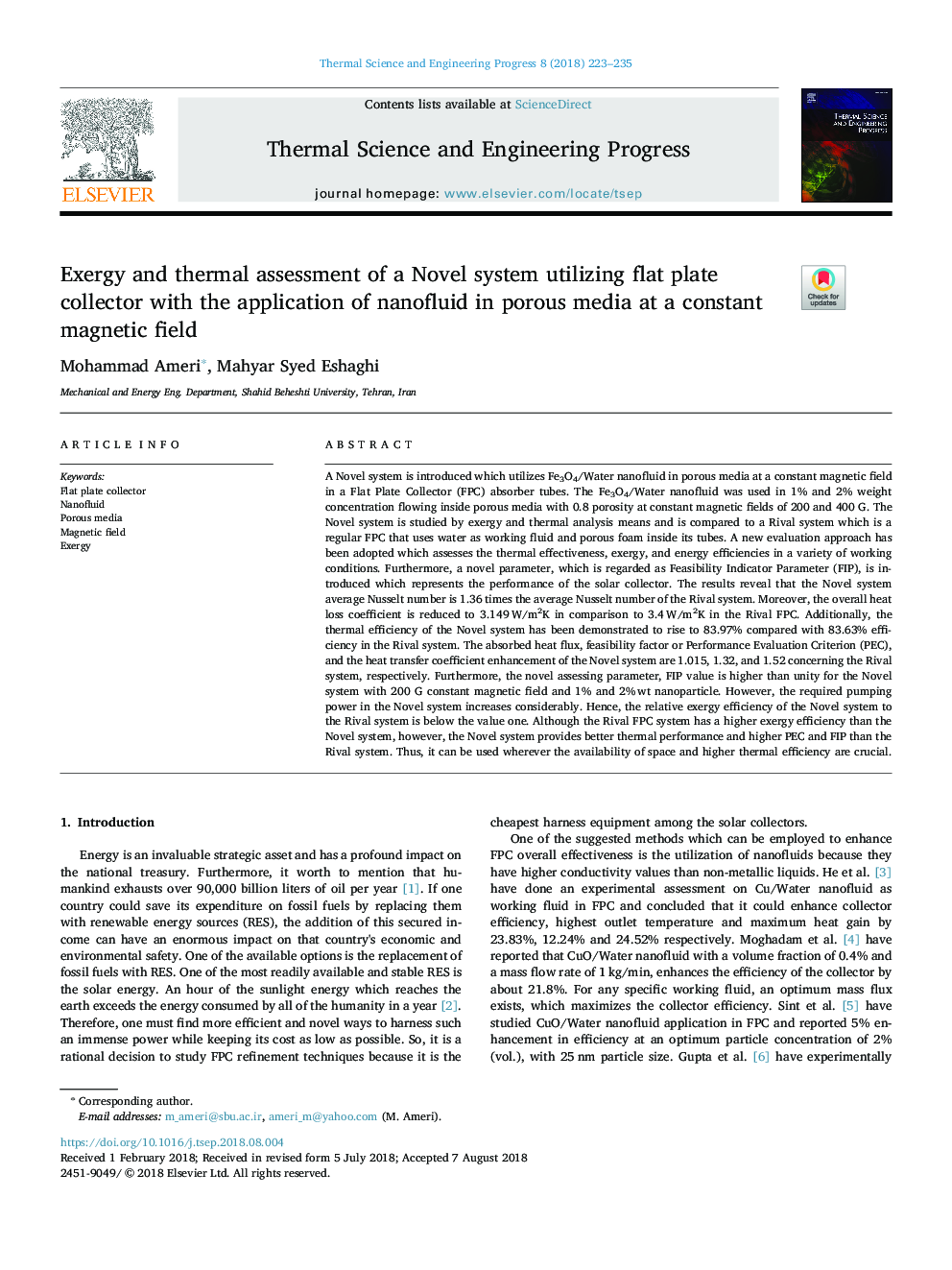| Article ID | Journal | Published Year | Pages | File Type |
|---|---|---|---|---|
| 10122790 | Thermal Science and Engineering Progress | 2018 | 13 Pages |
Abstract
A Novel system is introduced which utilizes Fe3O4/Water nanofluid in porous media at a constant magnetic field in a Flat Plate Collector (FPC) absorber tubes. The Fe3O4/Water nanofluid was used in 1% and 2% weight concentration flowing inside porous media with 0.8 porosity at constant magnetic fields of 200 and 400 G. The Novel system is studied by exergy and thermal analysis means and is compared to a Rival system which is a regular FPC that uses water as working fluid and porous foam inside its tubes. A new evaluation approach has been adopted which assesses the thermal effectiveness, exergy, and energy efficiencies in a variety of working conditions. Furthermore, a novel parameter, which is regarded as Feasibility Indicator Parameter (FIP), is introduced which represents the performance of the solar collector. The results reveal that the Novel system average Nusselt number is 1.36 times the average Nusselt number of the Rival system. Moreover, the overall heat loss coefficient is reduced to 3.149â¯W/m2K in comparison to 3.4â¯W/m2K in the Rival FPC. Additionally, the thermal efficiency of the Novel system has been demonstrated to rise to 83.97% compared with 83.63% efficiency in the Rival system. The absorbed heat flux, feasibility factor or Performance Evaluation Criterion (PEC), and the heat transfer coefficient enhancement of the Novel system are 1.015, 1.32, and 1.52 concerning the Rival system, respectively. Furthermore, the novel assessing parameter, FIP value is higher than unity for the Novel system with 200 G constant magnetic field and 1% and 2%â¯wt nanoparticle. However, the required pumping power in the Novel system increases considerably. Hence, the relative exergy efficiency of the Novel system to the Rival system is below the value one. Although the Rival FPC system has a higher exergy efficiency than the Novel system, however, the Novel system provides better thermal performance and higher PEC and FIP than the Rival system. Thus, it can be used wherever the availability of space and higher thermal efficiency are crucial.
Related Topics
Physical Sciences and Engineering
Energy
Energy Engineering and Power Technology
Authors
Mohammad Ameri, Mahyar Syed Eshaghi,
